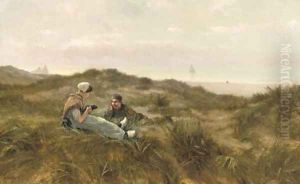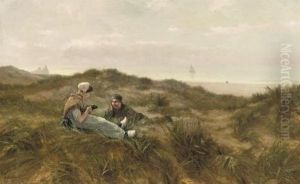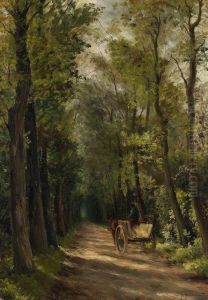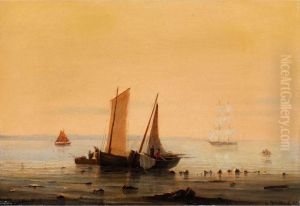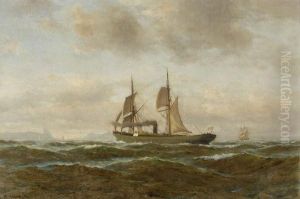August Bohnhorst Paintings
August Bohnhorst was a German painter known primarily for his genre scenes and portraits. Born on November 14, 1849, in Burgdorf, Hanover, he was influenced by the Düsseldorf school of painting, a group that was known for its meticulous detail, use of color, and emphasis on narrative in art.
Bohnhorst began his art studies at the Düsseldorf Academy of Arts under the guidance of influential painters such as Eduard von Gebhardt and Wilhelm Sohn. His education at this institution would have provided him with a solid foundation in the techniques and academic principles of fine art that were prevalent during the mid-19th century.
In his early career, Bohnhorst produced works that often depicted scenes from everyday life, showing the influence of genre painting traditions. His paintings were characterized by their fine detail, careful composition, and often included elements of sentimentality and moralizing themes, which were typical of the era.
By the late 19th century, Bohnhorst's reputation as a portraitist had grown. He was commissioned to paint portraits of notable individuals of his time, which displayed his skill in capturing not just the likeness but also the character of his sitters. In addition to his genre scenes and portraits, he also created historical paintings, though these are less well-known.
August Bohnhorst's artwork was well received in his time, and he exhibited at various art shows, including the Great Berlin Art Exhibition. Despite the shifts in artistic styles and the rise of new art movements at the turn of the century, Bohnhorst's work remained rooted in the academic and realistic traditions of the 19th century.
Bohnhorst's death occurred on December 4, 1919, in Düsseldorf. While he may not be as widely recognized today as some of his contemporaries, his contributions to genre and portrait painting provide a glimpse into the cultural and social milieu of his time. His works are part of the collections of various German museums and continue to be of interest to those studying 19th-century European art.
